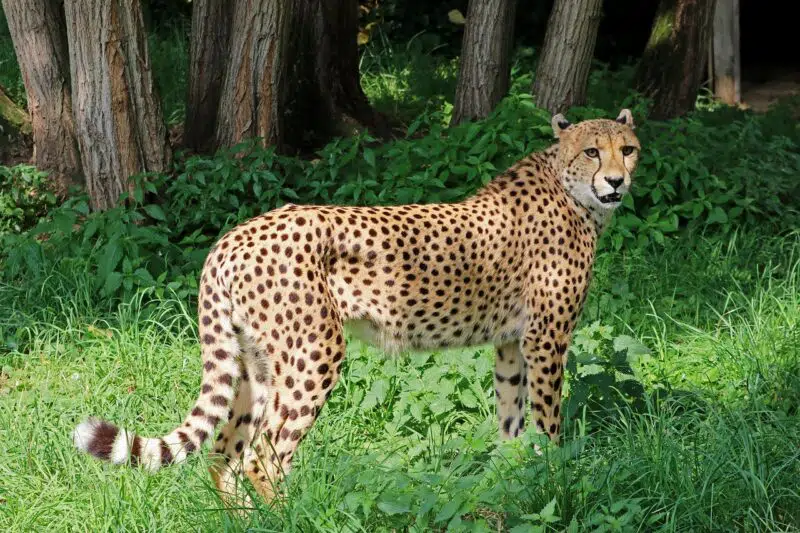Do you want to know the fastest land animal in the world? Look no further than the cheetah! Popularly known as “the king of speed,” this incredible creature uses its fantastic agility and power to reach speeds no other land-based animal can match.
In this guideline, we’ll discuss the anatomy and behavior of these fascinating animals to see what makes them outperform all their competitors in terms of sheer swiftness.
We’ll also explore why they are threatened with extinction and how conservation efforts may help save them in the coming years. So if you’re curious about these majestic creatures, read on!
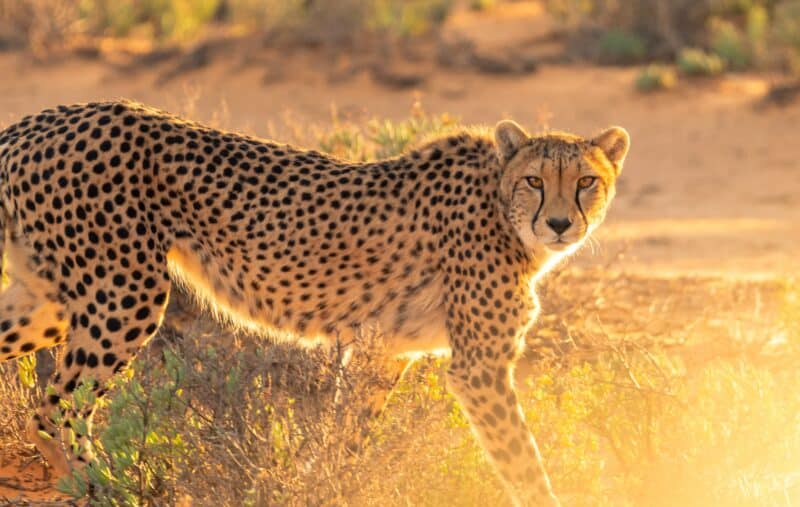
Want to jump ahead? Click below
Meet The Cheetah, The Reigning Champion Of Speed On Land
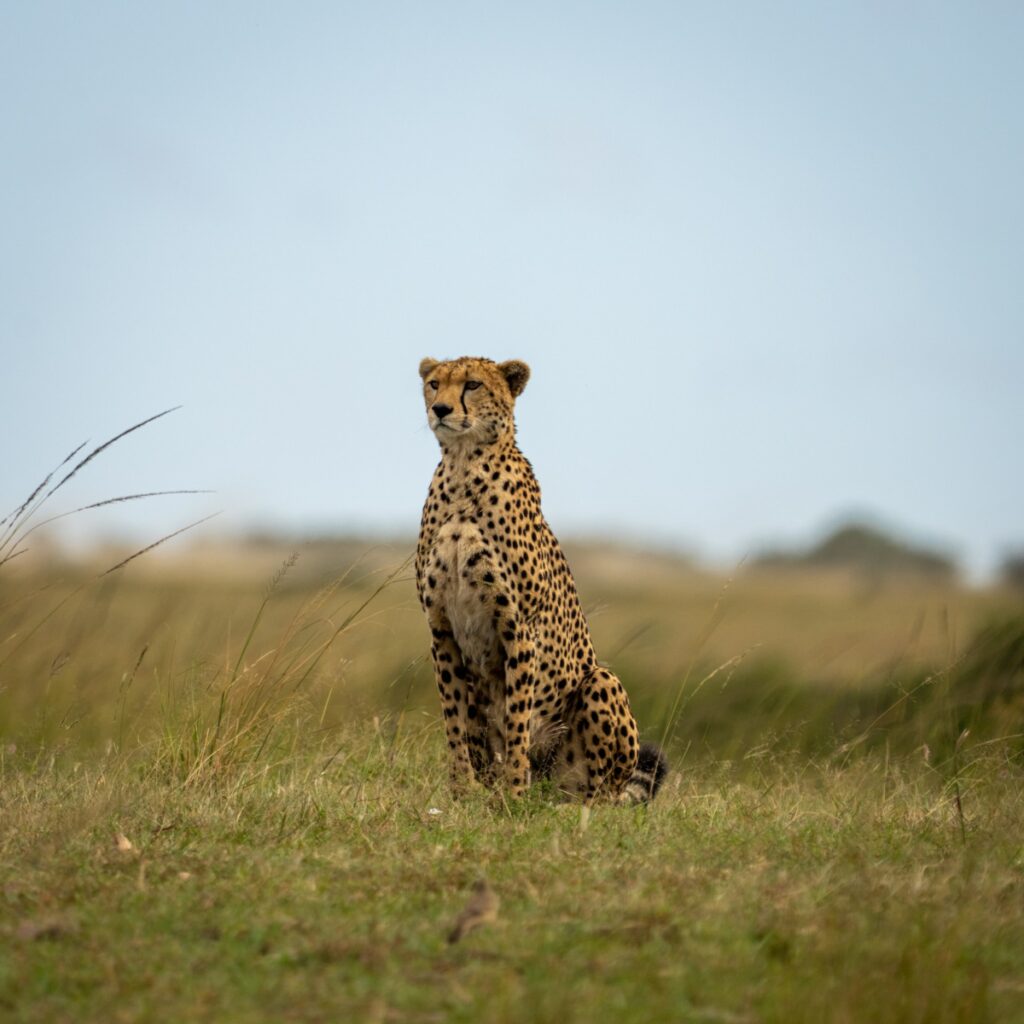
The cheetah is a swift and agile animal, renowned as “the king of speed.” They are the quickest land mammals and can reach up to 75 mph (120 km/h). Their powerful legs and slender frame can outrun any other terrestrial creature.
- Physical Attributes
- Compact Body
The cheetah’s body is built for speed, with a deep chest and long flexible spine that allow fluid movements at high speed.
- Long Tail
Its tail is a rudder when running, helping them keep balance and change direction quickly.
- Large Lungs & Heart
Cheetahs have enlarged hearts, lungs, and arteries, which help deliver oxygen throughout the body faster than other animals. It helps maintain their incredible speed over long distances.
- Claws
Cheetahs also have semi-retractable claws that help them grip the ground while sprinting so they don’t lose traction.
- Nose & Mouth Structure
A cheetah has large nostrils and an elongated palate which helps it to take in more air while running.
- Fur Patterning
Cheetahs have distinctive black spots on their fur, which provide camouflage in tall grasses and aid in hunting by blending into natural surroundings.
- Behavioral Characteristics of the fastest land animal
- Short bursts of speed
They typically use short bursts of speed to catch their prey rather than chasing after it for prolonged periods.
- Hunting strategy
Cheetahs often work together in groups or use natural obstacles such as cliffs or riverbeds to corner their prey before attacking to maximize success during hunts.
- Communication
Cheetahs communicate using vocalizations such as grunting, chuffing, hissing, miaowing, purring, and yowling, depending on what they’re trying to convey, such as warnings or mating calls.
Want to know what the fastest ocean animal is? Click here – Introducing The Fastest Swimmer In The Ocean
A Closer Look At The Cheetah’s Anatomy – What Makes It So Fast?
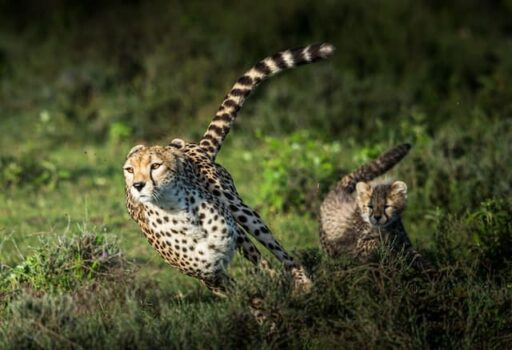
Cheetahs hold the distinction of being the quickest terrestrial animals on the planet by a significant margin. They can sprint up to 80 mph (128 km/h) over short distances of up to 500m.
Here are some of the key aspects of their anatomy that enable them to achieve such speeds:
1. Built For Speed:
Cheetahs are uniquely adapted for running at high speeds. Their long and slender build, lightweight frame, and narrow waist enable them to run with minimal effort, while their long tail helps them to maintain balance and maneuverability.
2. Muscles:
Cheetahs have incredibly powerful muscles, particularly legs, shoulders, and chest. Their legs can generate enormous force to propel them forward, while their chest muscles help them breathe while running.
3. Streamlined Structure:
With a compact head and streamlined shape, the cheetah minimizes air resistance and drag. Its nostrils are large and set back in the skull, which allows the cheetah to breathe more easily while running at high speeds.
4. Flexible Spine:
Cheetahs have an incredibly flexible spine that allows them to bend and twist in mid-air and change direction quickly, an essential skill for predators that chase prey.
The Cheetah’s Evolutionary History – How It Adapted To Become A Super-Predator
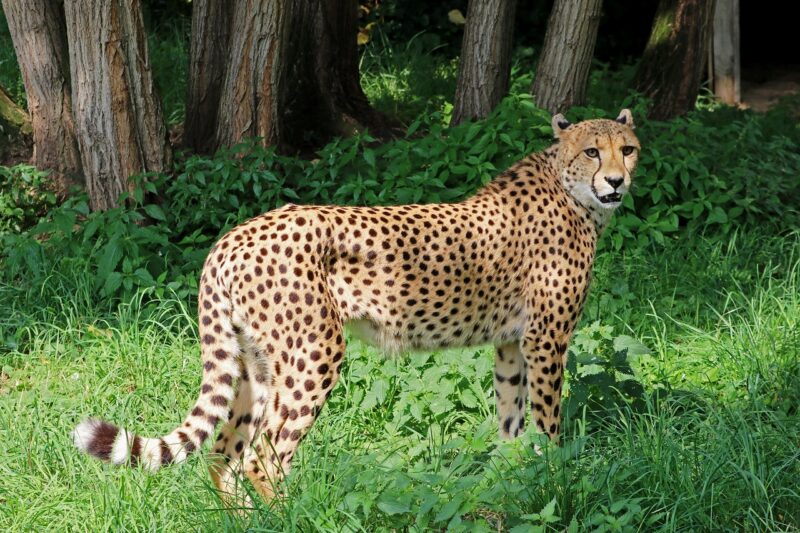
As the sole surviving member of the Acinonyx genus, cheetahs have an uncommon and distinct evolutionary past.
Below are some of the fundamental evolutionary adaptations that have contributed to their success as predators:
1. Adaptation To Open Grasslands:
Unlike other big cats that prefer forest habitats, cheetahs evolved to live and hunt in open grasslands, which require different skills and adaptations.
2. Narrowed Genetic Diversity:
In recent years, scientists have discovered that cheetahs have unusually low genetic diversity, which is believed to be the result of a bottleneck event about 10,000 years ago. This event reduced the genetic variability of the cheetah population, making it more vulnerable to disease, inbreeding, and other genetic problems.
3. Group Hunting:
Unlike other big cats, cheetahs occasionally hunt in groups, which allows them to target larger prey more effectively. It is thought that this conduct developed as a reaction to the rivalry between cheetahs and other predators over resources and land.
4. Specialized Diet:
Cheetahs are highly specialized predators that rely almost exclusively on small to medium-sized ungulates, such as gazelles and antelopes. This specialization has led to the evolution of specific hunting strategies and adaptations that enable them to capture their prey with incredible speed and agility.
The Different Types Of Prey That The Cheetah Goes After
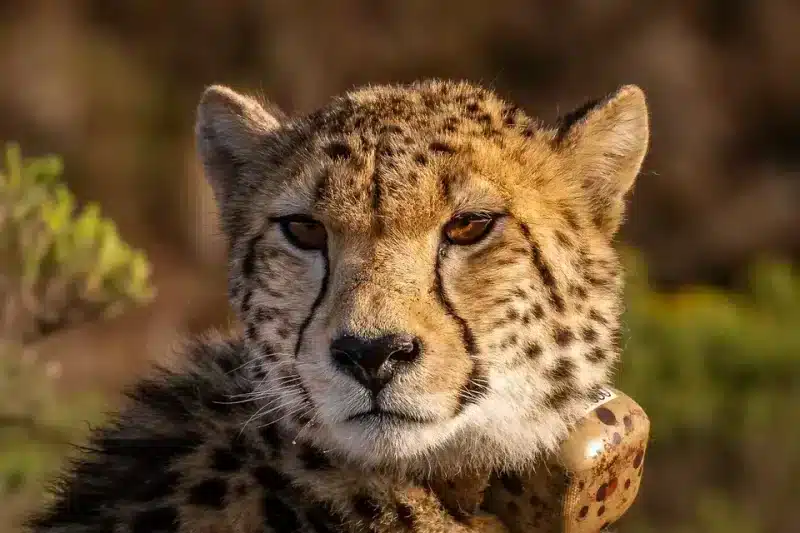
The hunting habits of the cheetah are fascinating and often misunderstood.
Let’s look at the different types of prey the cheetah follows.
1. Prey Of The Cheetah
- Antelopes:
Cheetahs primarily hunt different antelopes, such as gazelles, impalas, and springboks. These animals are fast and agile, but the cheetah’s speed and agility give it an edge in capturing them.
- Small Mammals:
Cheetahs also hunt smaller prey, such as hares and birds. These animals are not necessarily fast, but they are elusive and can be difficult to catch.
- Vulnerable Animals:
In some cases, cheetahs will target young or weak animals to increase their chances of success in hunting.
2. Hunting Tactics
- Speed:
Cheetahs rely on their incredible speed and agility to catch their prey. They can run up to 70 miles per hour over short distances, but their sprinting ability could be more sustainable over longer distances.
- Ambush:
Cheetahs will also use an ambush tactic to catch their prey. They will use cover to their advantage and then launch a surprise attack.
- Teamwork:
Cheetahs sometimes hunt in pairs to bring down larger prey.
How Human Activities Affect The Cheetah Populations Around The World
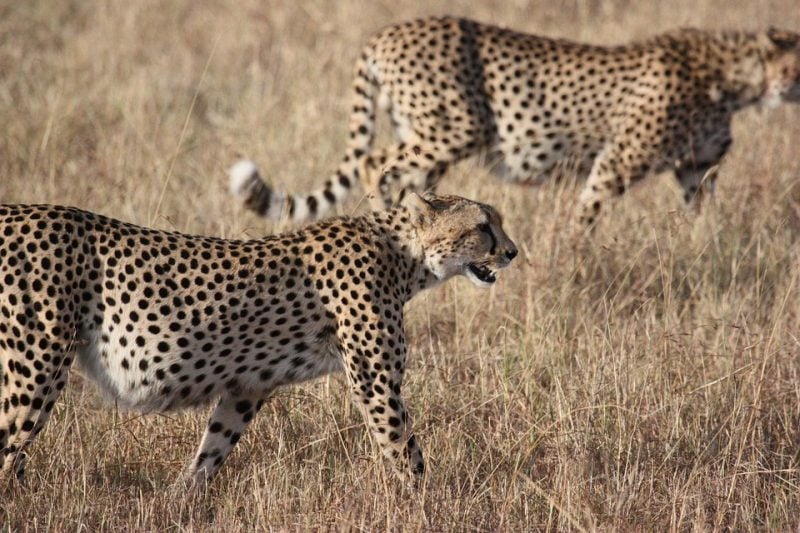
The cheetah is an iconic animal and an important part of our natural world. However, human activities are having a significant impact on cheetah populations around the world.
Let’s take a closer look at some factors contributing to this decline.
1. Habitat Loss
- Human actions such as deforestation and agriculture have led to the depletion of cheetah habitats. As their natural habitats shrink, cheetah populations become more isolated, making it harder for them to find mates and raise offspring.
- In some areas, cheetahs are forced to live in more human-dominated regions, leading to increased conflicts with people and livestock.
2. Poaching And Hunting
- Cheetahs are often hunted for their fur, used in traditional clothing and home décor. The demand for their fur has resulted in a significant decline in cheetah populations in some areas.
- In some parts of Africa, cheetahs are considered pests and are hunted or poisoned by farmers to protect their livestock.
3. Climate Change
- Climate change significantly impacts the habitats and prey of cheetahs.
- Changing weather patterns and drought make it harder for cheetahs to find food and water, leading to a decline in their overall health and numbers.
4. Conservation Efforts
- Despite these challenges, many conservation efforts are underway to protect cheetah populations worldwide. These efforts include habitat restoration, breeding programs, and outreach to promote sustainable living practices.
- More needs to be done to ensure the survival of this incredible species, including increased protection against poaching and habitat loss.
How You Can Help Conserve And Protect These Incredible Animals
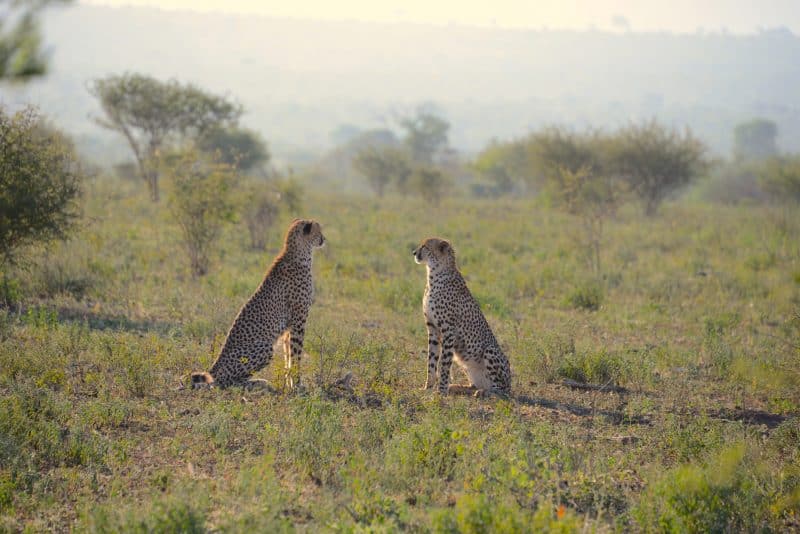
Cheetahs are one of the most incredible animals on earth, but sadly they are also endangered.
Here are some simple ways to help conserve and protect these magnificent animals:
- Spread Awareness:
Educate others about cheetahs and their situation through social media, conversations, and local events.
- Support Conservation Organizations:
Donate or volunteer to organizations that protect cheetahs and their habitat.
- Reduce Your Carbon Footprint:
Use public transport, eat less meat, and reduce energy consumption to help with climate change’s impact on cheetahs.
- Avoid Buying Cheetah Products:
Do not purchase cheetah skin, jewelry, or home decor, which encourages poaching and illegal trade.
- Report Suspicious Activity:
Report any illegal or threatening activity towards cheetahs to the appropriate authorities.
- Encourage Sustainable Tourism:
Choose eco-friendly lodges and tours that support conservation efforts and respect the animals and their habitat.
Wrapping Up with the Fastest Land Animal in the World
The cheetah’s incredible speed has awed us since its discovery, but human activity has led to its endangerment. Conservation efforts are urgently needed to protect these magnificent animals. Consider donating to a cheetah preservation organization or taking local action to make a difference.
By raising awareness and working together, we can ensure future generations will witness the cheetah’s grace and speed across the African savanna.
Thanks for following along with me! I hope you enjoyed reading about this animal that speeds past you. Next are Most Aggressive Insect In The World, Tallest Mammal in the World, and Biggest flock of migrating birds ever recorded.
Join our Forum for free today!

- Surprised By A Snake In My Toilet In Bali - July 24, 2024
- Discover the Profound Spiritual Meaning of the Brown Bear - July 24, 2024
- Unexpected Snake Slithers Across My Windshield On Arizona Highway - July 23, 2024

